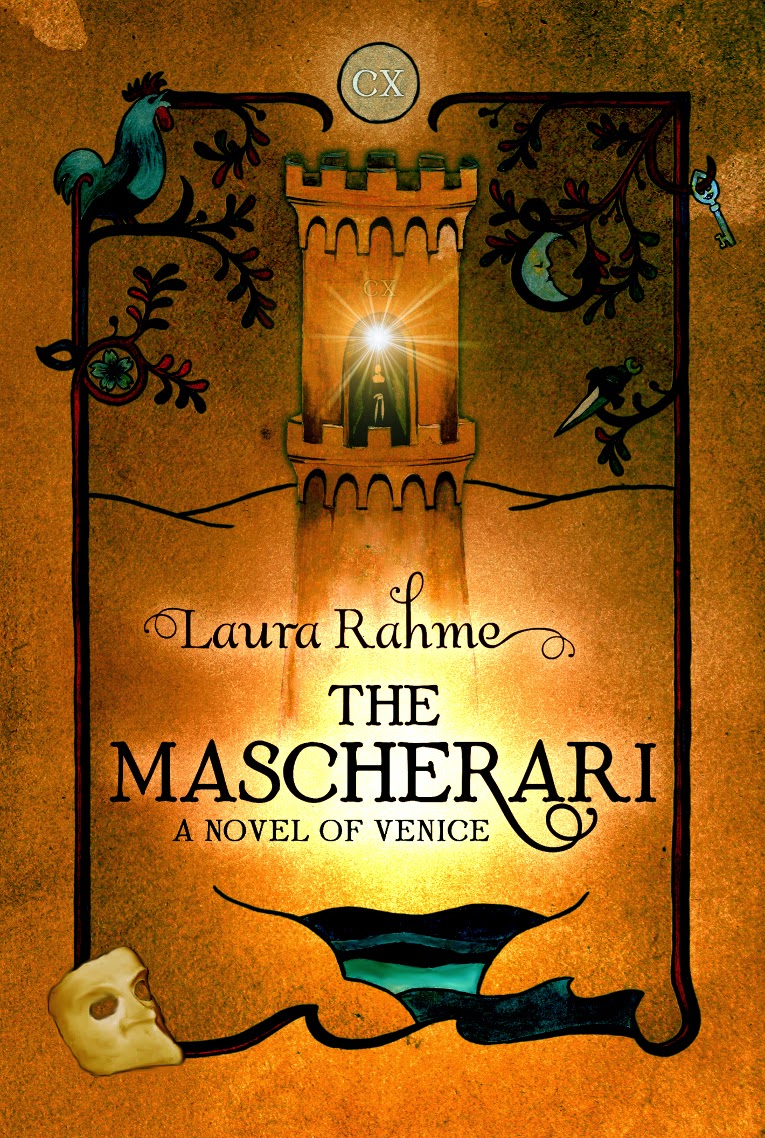When I was a young girl, I was a huge fan of the French-Japanese animated production, Ulysses 31.
Two of my favorite Ulysses 31 episodes were, Ulysses and the Sirens and Ulysses and the Minotaur. All the episodes drew me into Greek mythology but these two stood out.
Read about Ulysses 31 and the Minotaur (or skip to the next section)
In this fantastic sci-fi version of the Greek tale, Theseus and Ariadne-who sports a punk-like androgynous blue hair style-are forbidden lovers a la Romeo and Juliet. Ariadne fails to persuade her father to spare Theseus; King Minos imprisons him in the labyrinth where he is fated to die at the hands of the Minotaur.
Luckily, Ariadne happens to be a super pilot; she boldly flies her vessel to the Minotaur planet in the hope of saving Theseus before this one is mauled by the Minotaur.
On her way, she meets our hero, Ulysses, who has been told-somewhat cryptically-by Aegeus that 'wherever his son, Theseus, is imprisoned lies the secret path back to planet Earth'. Given that Ulysses is keen to return home, he decides to help Ariadne save Theseus.
Upon landing on Minotaur planet, Sheerka (think: Apple's Siri, but in command of Ulysses' spacecraft) warns them that it is a labyrinth where they will be easily lost. No kidding, Sheerka. The ever resourceful Ariadne happens to have a necklace, whose beads are none other than tiny geo-location emitters. The group uses these beads to track their journey into the labyrinth. Unfortunately, the labyrinth is a dynamic fortress with shifting walls and landscape, reminiscent of Alex Proyas' Dark City. So much for those beads.
Ulysses and Ariadne finally find Theseus and...come face to face with the trident-bearing blue-skinned Minotaur who looks very much like some Indian deity. A battle ensues. When all seems lost, Ulysses throws his laser saber to Theseus and this one finally defeats the Minotaur.
It is then that Ulysses realizes the meaning of Aegeus' words-the path to Earth was never to be found in Minotaur planet, but rather, was a secret possessed by the Minotaur himself. Ulysses feels stupid and misses out yet again on an opportunity to return to Earth. But, we, Ulysses 31 fans don't really care and we hope he remains stranded in space forever so that we can continue to watch this wonderful series.
You can watch the episode here. (In French)
My obsession for this episode was not surprising. Just like mermaids, labyrinths and mazes have fascinated for centuries. Thanks to the legend of Theseus and the Minotaur and to labyrinth engraved coins found at Knossos in Crete, one of the best known mazes in the Western world harks from the Minoan Kingdom. Lesser known are further depictions of ancient labyrinths, some carved into rocks, which have been found in Cornwall, India, Peru, Arizona, the island of Sardinia, Galicia in Spain, the UNESCO heritage listed rock drawings of Val Camonica in Northern Italy, and in Morocco.
The World's Largest Maze
This fascination for mazes has even led one
If you fancy a trip to Italy next year, why not hop past Parma and get lost among the bamboo hedges?
Italy's Amazing Mazes
But why stop at Parma? Take your pick. Among those countries with a history of mazes, Italy stands out today by having some of the most fascinating green mazes in the world.
Even in the 18th century, when Napoleon wasn't busy dismantling the Venetian Arsenale and appropriating the wealth of the Venetian navy, he made a visit to Villa Pisani (built for the Venetian family of St Stephan Pisani, starting in 1721), famous for its maze of boxwood hedges. Situated in the town of Stra, the Villa Pisani maze consists of 12 concentric rings with high hedges leading to a central tower. It is said that Napoleon ventured inside this maze and got himself lost. I wish he had stayed there forever.
Speaking of Venice, many history authors, including Peter Ackroyd, have written of its architecture as being labyrinthine. This is actually not a coincidence; let's take a look at the symbolism associated with mazes and some of their uses throughout history.
Baffling Evil Spirits
An ancient belief holds that evil spirits can only travel in a straight line. Perhaps this is what has led many medieval cities from Morocco (Fez, Marrakech), Greece, Spain and Italy to be constructed in roughly labyrinthine manner, with an intricate network of narrow streets some of which bend or end abruptly, others which join up in unpredictable ways. In 1999 while visiting the old town of Toledo, I myself became lost a number of times to the point of anxiety.
This complex architecture was presumably designed to ward off 'evil' and ensure the security of the local dwellers. More likely it was a strategy to aid residents in their defense against potential invasions, given that foreign attackers would more easily find themselves disoriented.
Here, the meaning associated with the labyrinth imagery is that of an 'impenetrable fortress' or a place heavily defended and which is not easily entered. The meaning extends beyond the legend of Theseus, to places like India. For example, Iranian geographer Abu'l-Rayhan Al-Biruni uses a labyrinth illustration in 1045 AD to depict the impenetrable Ravana fortress at Lanka, which according to the Ramayana epic was where the demon Ravana abducted Sita, wife of the hero Rama. Similarly, in the Byzantine period, the 13th century Islamic geographer, Al-Qazwini, made use of a labyrinth drawing to depict a map of Constantinople.
Roman Culture
The legend of Theseus and the Minotaur was very popular with the Romans and through their conquest, the iconography of the Minotaur and the Labyrinth were propagated in Northern Africa and throughout many places in the Mediterranean world. The cultural significance may have ranged from honoring a classical tale, to the idea of conquest, to bravery, to the slaying of bestiality which aligns with the military and imperialist principles of the Romans.
As far as slaying a half-bull creature, the slaying of the Minotaur is vividly reminiscent of the Cult of Mithraism which the Romans practiced. Here, Theseus effectively becomes the Persian entity, Mithras, and slays the bull.
Earliest known Mithraic monument
Rome, ca.98-99 A.D
The labyrinth legend may have also seeped into the 'popular' culture of the period where it hinted to danger, a guarded secret, or to the dwelling of someone less than hospitable. For exampe, in one excavated house in the ruins of Pompeii, one can read the engraved inscription, "Labyrinthus hic habitat Minotaurus" (The Labyrinth; here lives the Minotaur) which in this case sounds like "Beware of Dog". But who knows.
The Etruscans-also a people subjugated by the Romans and whose cultural influence in Italy has been traditionally overlooked as a result of Roman supremacy-already possessed labyrinth depictions in their own art.
For example, on the below Etruscan art strip found on the late 7th century Tragliatella pitcher, the labyrinth image has been labeled "Troy". Here the labyrinth comes to symbolize once again the "impenetrable fortress" and hints to the battle at Troy. Indeed, in some regions of antiquity, labyrinths were known as “Troy towns” -in the sense that Troy had once been constructed to be impenetrable- and the legend held that at the center of the labyrinth, there resided, not a Minotaur but rather a young woman in need of rescue. This woman was commonly thought to be Helen of Troy.
But we will see, later in this article, how the heavy copulation imagery depicted to the far right has led to a wildly different suggestion for the Etruscan symbolism of the labyrinth. For now let's skip ahead to the Middle Ages.
Pilgrimages of the Soul
During the Middle Ages, large labyrinths became featured on the pavements of a number of cathedrals, notably throughout Italy and France. In this period, the labyrinth was conceived as a metaphor for the journey of life and the cleansing of the soul, leading to enlightenment. It was used as a penitent's journey for those who were too ill or too old to take part in the pilgrimage to the Holy City of Jerusalem and or to Santiago de Compostela in Spain.
The penitent would pray and move along the path of the labyrinth on his knees until he reached the center or had gone around a number of loops. It was thought that upon completing their designated path, the penitent had cleansed his or her soul and had attained spiritual growth. From a psychological point of view, this labyrinth metaphor provided a valuable means for meditating, relaxing and finding oneself purified.
Labyrinth Pavement in Chartres Cathedral, France
The use of hedges in gardens date back to Roman times. In turn, garden mazes may have first been mentioned in 13th century in Belgium. Such mazes developed for entertainment purposes, allowing people to take long pleasurable strolls, engage in conversation, exercise, take part in secret courtships or play games. The patterns and shapes of these hedge mazes vary greatly.
Chateau de Villandry Gardens
Loire Valley, France
I indicated earlier that there is possibly a different meaning to the Etruscan labyrinth, one which might hark back to an earlier Bronze Age period. This is indeed the argument of recent researchers.
A prehistoric cave painting of a labyrinth depicted in the Polyphemus Cave, found 9 km North of Trapani in northwest Sicily, has been dated to 3000 BC. This painting, older than the rock carvings at Val Camonica (which at their earliest are from 1800 - 1000 BC) may well be the oldest known labyrinth in the world.
The labyrinth image is painted in red and measures approximately 50 cm in diameter. It lies in the ceiling of a niche in the cave. The original image is believed to have covered the entire niche vault and slanted down to the wall of the niche. Research suggests that the labyrinth bears a feminine significance - akin to a uterine or vulvar symbol. The use of red paint-which in Paleolithic and Neolithic periods was associated with blood and the color of the female reproductive organs, and therefore with birth and regeneration- also lends support to this claim.
Due to the position of the painting in the niche- which can best be seen while lying down- it has been suggested that the cave may have been a place of sexual ritual. This is to say that a couple would enter the niche, lie down and engage in procreation while gazing at the labyrinth figure above.
Similarly, the Etruscan labyrinth described earlier may be none other than a female uterus or a symbol of regeneration. This suggestion is supported by the findings on the Tragliatella pitcher (shown in non-PG detail below) which depicts a couple making love beside the labyrinth symbol.

What do you think?
From the 31st Century to the 15th Century
Thanks to watching too many Ulysses 31 cartoons in my youth (and maybe following a bout of historical research), I couldn't help but feature a maze in my latest writing. Nothing fancy, but it's in there somewhere.
In the historical novel, The Mascherari,which is set in 15th century Venice, the characters become lost in a hedge maze in an island near Venice. While the maze remains fictional, the historical background renders it no less plausible.
After writing The Mascherari, I took a visit to Hyde Park, in Sydney.
Unlike the glorious Italian mazes, Hyde Park is no labyrinth but it adjoins St Mary's Cathedral. In front of the cathedral is Archibald Fountain. Designed by French artist, François-Léon Sicard, and completed in 1926, it is a lavish fountain graced by three statues.
Two of these made me smile.
One is a statue of the Goddess Diana holding a bow. The other depicts Theseus slaying the Minotaur.
They were perfect.
More reading:
Rigoglioso, Marguerite, "The Oldest Labyrinth in the World? The Polyphemus Cave Painting." Caerdroia - The Journal of Mazes and Labyrinths. Volume 29, (1998): pp 14-22.









No comments:
Post a Comment